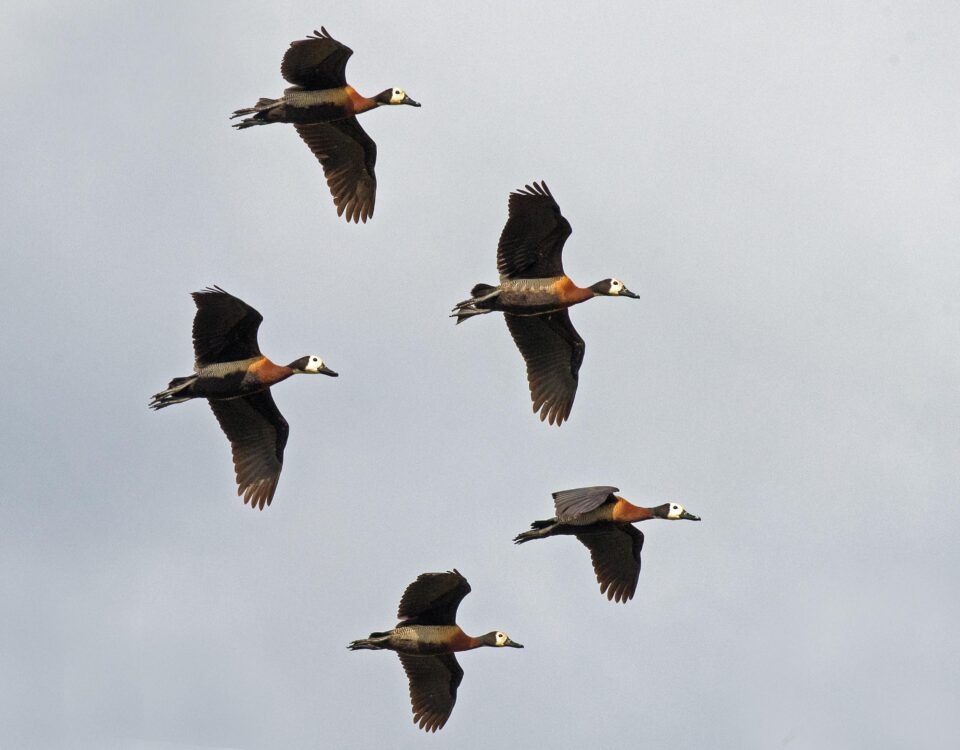Rössmund Lodge, Swakopmund – A small oasis in the desert
July 26, 2012Bloedkoppie and Rock Arch: Camping with ‘wild beasts’
July 26, 2012Long-tailed Paradise-Whydah
Vidua paradisaea
Roberts No 862
by Pompie Burger
As far as garden birds are concerned, the Long-tailed Paradise-Whydah is definitely one of the most handsome visitors to the seed tray, and the male is undoubtedly the largest and most impressive whydah finch in the whole of Southern Africa.
It could be argued, though, that the male whydah would have benefited from attending finishing school to learn something about dress style, because his summer dress is somewhat elaborate, certainly without the subtleties one would expect from a self- respecting male. On the other hand, it still amazes me how agile these birds are, despite being so overdressed, especially when it comes to that enormous tail. This is probably why they are not intimidated by any other birds at the feeding tray, often behaving quite aggressively. They tend to visit the feeding tables in groups of up to 10 birds at a time.
Long-tailed Paradise-Whydahs occur mostly in the central and northern parts of Namibia, avoiding areas without permanent open water. Flocks of up to 80 birds have been recorded here. They are often called acacia whydahs, because of their distribution, while their look-alike counterpart, the Broad-tailed Whydah, occurs in the forest woodlands of Zimbabwe.
That male Long-tailed Paradise-Whydahs gradually change from rather drab-looking birds in winter to these absolute beauties in summer, is nothing short of a miracle. Apparently the females go for the male with the longest tail (what else would you expect?) because they are stronger. This process takes place over an extended period, with the male in eclipse plumage for only a very short time during mid- and late winter. My main concern is what happens to the long impressive black tail feathers at the end of the breeding season. So if you find one, would you please bring it to me?
About the author:
Based in Windhoek, Pompie Burger is an orthopaedic surgeon whose part-time passion is photography, in particular wildlife, and specifically birds. This regularly takes him to the most remote corners of the country, resulting in riveting images and articles.
Pompie is the author and photographer of the coffee table book Birds of Namibia, which was published in 2008. The book contains articles and photographs which attest to the insight and knowledge of an accomplished observer.
Read more of his articles in our Birding Section.
This article appeared in the Aug/Sep ‘07 edition of Travel News Namibia.


